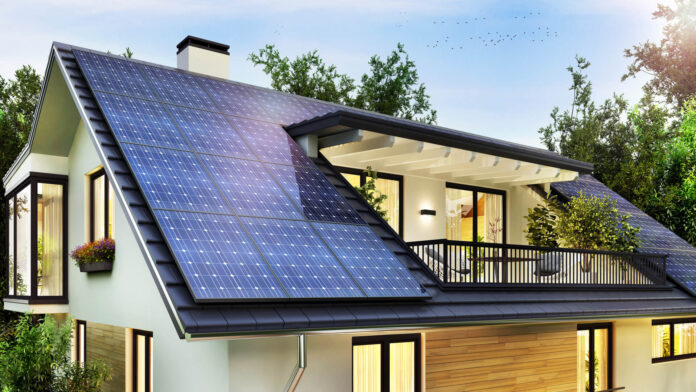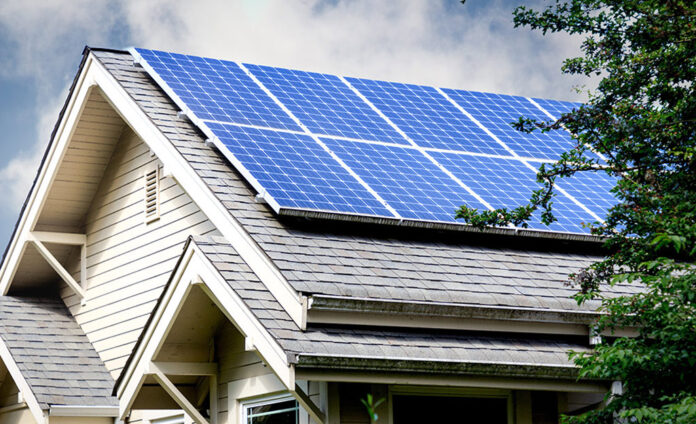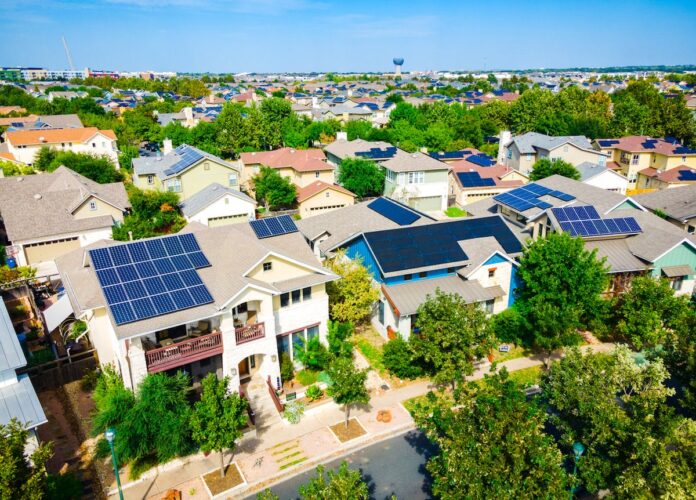
The range of solar modules is constantly growing. Different manufacturers, sizes, and cell types – it’s easy to lose track of things when planning a photovoltaic system. In this article, we will show you what you need to know about solar modules – and what you need to look out for when buying one.
In addition to the inverter, solar modules are a central component of your photovoltaic system. Therefore, inform yourself beforehand about the various options to select the model that suits your needs. We explain how solar modules work and which criteria you can use to select the right module.
Structure of solar modules
Solar modules – also called PV modules or photovoltaic modules – are responsible for converting solar energy into electricity. They consist of many small solar cells interconnected within the module frame.
PV Modules Consist of Several Layers
The top layer is usually the front glass (ESG). This serves to protect the module against temperature changes as well as blows, impacts, or pressure. Below the front glass is the upper embedding film, usually a plastic layer made of ethylene vinyl acetate (EVA) or cast resin. The plastic film is welded to the solar cells at 150° Celsius or even higher temperatures.
This form of lamination forms waterproof protection against corrosion. This prevents moisture from damaging the solar cells. The middle layer of the modules forms the solar cells. The solar cells are connected via solder strips and thus convert the sunlight into electricity.
Another thin layer of plastic made of EVA or cast resin is drawn under the solar cells. This way, the solar cells are sealed airtight and watertight on both sides. The so-called Tedlar composite film forms the closure on the back of conventional glass film modules.
This is usually a specially developed plastic film made from polyvinyl fluoride (PVF). This protects the solar module and prevents ingress from dirt, chemicals, or grease. However, a glass-glass module uses another layer of glass instead of plastic.
Finally, all the module components are combined in an aluminum frame. This makes installation easier and gives the module additional support.
How the Solar Cells Work
To better understand how solar panels work, we need to look at their smallest component: the solar cells. In general, three cell types are distinguished:
- Monocrystalline Cells
- Polycrystalline Cells
- Amorphous Cells
Today, monocrystalline cells are mostly used because they are much more efficient than polycrystalline cells. In more detail, we explain solar modules’ efficiency in the product properties section. Monocrystalline cells are made from the semiconductor silicon extracted from quartz sand. The most important property of this element is its high conductivity when supplied with energy – in the case of photovoltaic technology, this supplied energy is light.
So when the sun’s electromagnetic rays – which consist of photons – hit the silicon of the solar cell, electrons are released within the solar cell, and a current flow is created. The released electrons are transported to the so-called busbars via fine metal contacts on the cells. These conductor tracks collect the electrons and carry the current out of the module in a bundled form. The more busbars a solar module has, the better the electrons can be distributed and the higher the conductivity.
However, the disadvantage of many busbars is that they take up space on the solar cell where no electricity can be generated. Therefore, choosing the right middle ground between conductivity and energy production is important.
Nevertheless, the trend is currently developing towards more busbars or solar modules in which the busbars are laid on the back of the module.
You Should Note These Product Features

When deciding on the right solar module, the selection is often already limited by the various specialist companies. We have already made a pre-selection in our solar online configurator, which will make your decision easier.
Another decision-making aid is the consideration of product properties such as efficiency, temperature behavior, and processing, which will significantly impact your electricity yield. When deciding, it helps to compare the various solar modules about these and some other properties in advance.
Let us advise you individually on solar modules with a view to your solar power generation and use.
Efficiency
We mentioned the concept of efficiency at the beginning in connection with the different cell types. Efficiency is another important key figure when considering solar modules. It provides information about the effectiveness of the modules and describes the relationship between sunlight and the energy generated.
The following applies: the higher the efficiency, the more effectively the solar cell works. This value shows how well the solar cell utilizes the energy available as light. Since the efficiency depends on the temperature, it will decrease as the temperature rises. The efficiency of monocrystalline cells is currently around 20-22 percent.
Temperature Behavior
We have already explained the importance of the efficiency of solar modules to you in the previous paragraph. And since the heat has a significant effect on this, you should always find out about the temperature coefficients of the various modules when planning your solar panels’ system such as Renogy, and compare them with each other.
Guarantee

When it comes to the guarantee of solar modules, you should remember two terms: product guarantee and performance guarantee. The product guarantee includes material damage, costs for repairs, and if necessary the replacement of defective solar modules.
On the other hand, the performance guarantee promises a certain minimum performance even after years of operation of your off-grid solar system. The usual minimum guarantee is currently 10 years product and 20 years performance guarantee.
Modules from manufacturers such as Trina and JA Solar have a product guarantee of 12 to 15 years and a performance guarantee of 20 years. On the other hand, providers such as Meyer Burger even guarantee product and performance guarantees of 25 to 30 years.
Cost of a Solar Module
Of course, the costs for the solar system and the individual modules are also decisive during the planning phase. The prices for mini solar panels have fallen sharply in recent years. The reason for this is, among other things, the high level of competition in the market and the increasing production capacity.
The technology is now so mature that prices are only falling moderately. The various solar modules’ prices vary significantly depending on the manufacturer and the quality. However, the easiest way to compare them is by looking at the cost in euros per watt peak.
A solar module costs around 40 to 65 cents per watt peak for private customers. Converted to standard modules with an output of a 380-watt peak, you can expect around 152 euros, while premium modules with a 380-watt peak from German manufacturers are available for around 247 euros.
The Design

If you attach great importance to aesthetics and design, there are also so-called all-black and standard solar modules. These impress with their dark foiling with their simple, black look. However, you will have to accept minor performance penalties when choosing the better design. It would help if you considered this when choosing your PV modules.
Most models are manufactured in Asia since there are usually significantly higher production numbers. However, this usually does not influence the quality of the modules. Many models are still developed in Germany and manufactured with German technology.
In addition, the products must meet all current quality and safety standards. Interested parties, therefore, need not worry about having to do without the proven quality “Made in Germany.” However, the German market is growing again, and more manufacturers are producing solar modules in Germany.
This is How You Can Find Out More About Solar Modules
In general, there is no suitable module for everyone interested in photovoltaics. Rather, the right module must be determined individually for each customer. It always depends on what is important to you when selecting the individual components of your PV system.
In addition to the budget, the size and nature of your roof also play a decisive role in choosing your solar modules. In the first step, the specialist company you commission will make a pre-selection based on the modules they offer. In the second step, you can compare the various solar modules’ product properties.
In the solar module comparison, you can find out more about some of the currently most popular solar modules on the PV market. We have summarized the most important key data of the various modules. But you can also get detailed advice from our solar experts. They can give you helpful tips on which solar modules best suit you and your needs.

Conclusion
Have you lost track while choosing the right solar modules? No problem. We have summarized the most important tips for buying solar modules for you.
From the efficiency of solar panels to temperature behavior to the guarantee, you now know exactly which product properties you need to compare and how you can best get information.



![How to Design a Tiny Home [Step-by-Step Guide]](https://pmcaonline.org/wp-content/uploads/2024/01/Tiny-Home-Living-Area-218x150.webp)







